Day 9 and it’s Tuesday. Tomorrow, as I write this, it will be Tuesday two weeks on!
Today we are being coached into the hilly ground to the south of the Danube valley. We had docked at Rousse again. Familiar ground – we know exactly where we are! Yeah, right!
First up is a visit to the Rousse Lom valley and the churches carved into its vertiginous rocky cliffs. The Church of The Holy Mother is a UNESCO World Heritage site because of the 25 “fields” of frescoes on the walls and ceiling.

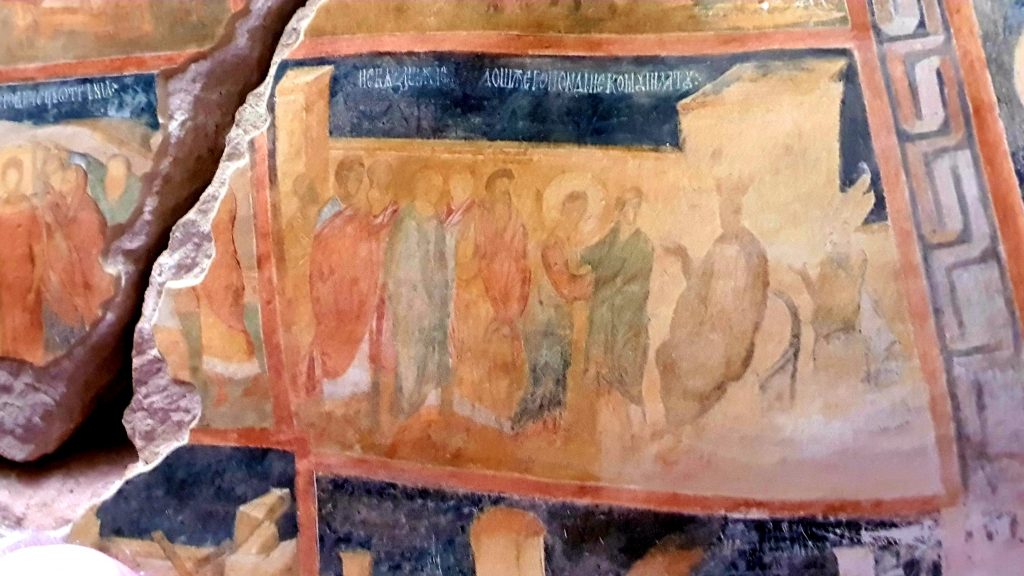
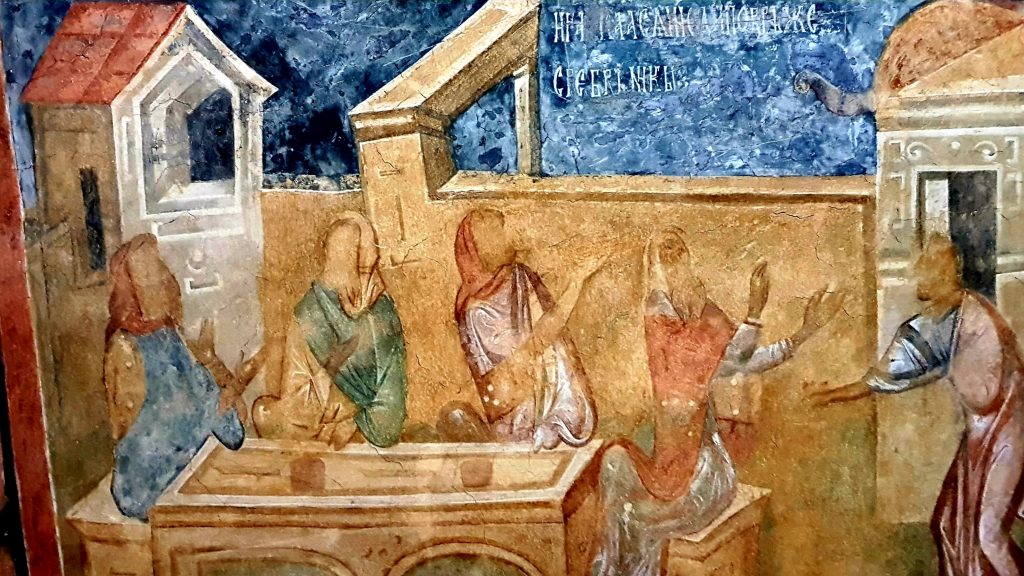
Painted in the 14 century by a gifted artist from Tarnovo, these remain some of the best preserved examples of the medieval Palaeologian style of Christian art. Obviously! We all knew that!
The church was reached by a very narrow, winding road into the valley. It was really lucky that our coach didn’t meet anything coming the other way. We parked right beside the church. The entrance was a mere 50 metres above us. Straight up the rock face!
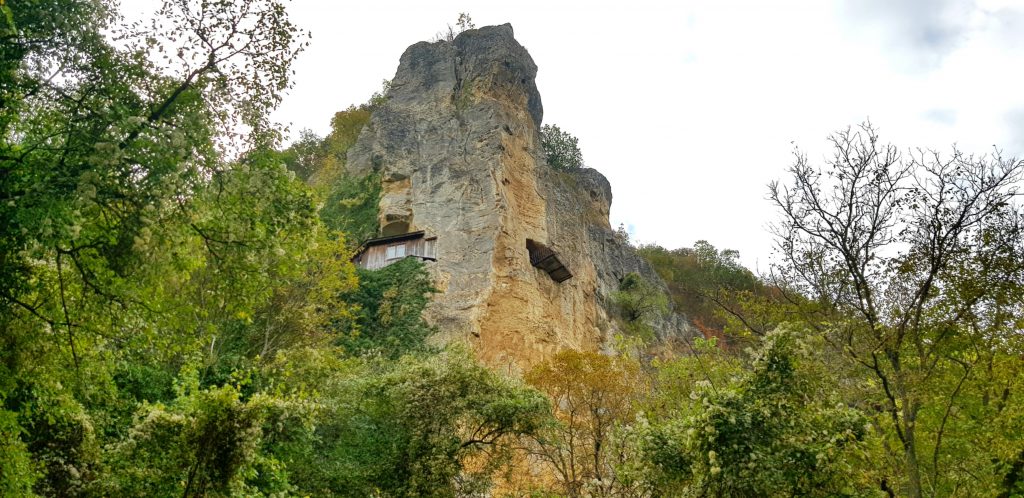
We had three choices (four, if you include staying on the bus!). One, break out the ropes, harnesses and carabiners and get climbing. Two, walk up the 3487 steps more or less diagonally up the face. Or three, walk up a long sloping path which zig zags to the level of the church entrance via Serbia. Consensus was for option three. Very sensible. We can always abseil or take the steps down after! The church door is a rather inconspicuous cleft in the rock face.
It was not the easiest of tasks getting pictures in a small, dark cave with 26 other cruisers milling about. However a quick shout that the earthquake warning system – a piece of glass glued across a crack in the ceiling – had detected a tremor cleared the space in no time. The guardian of the cave was out first followed by the local guide then 26 fellow tourists…
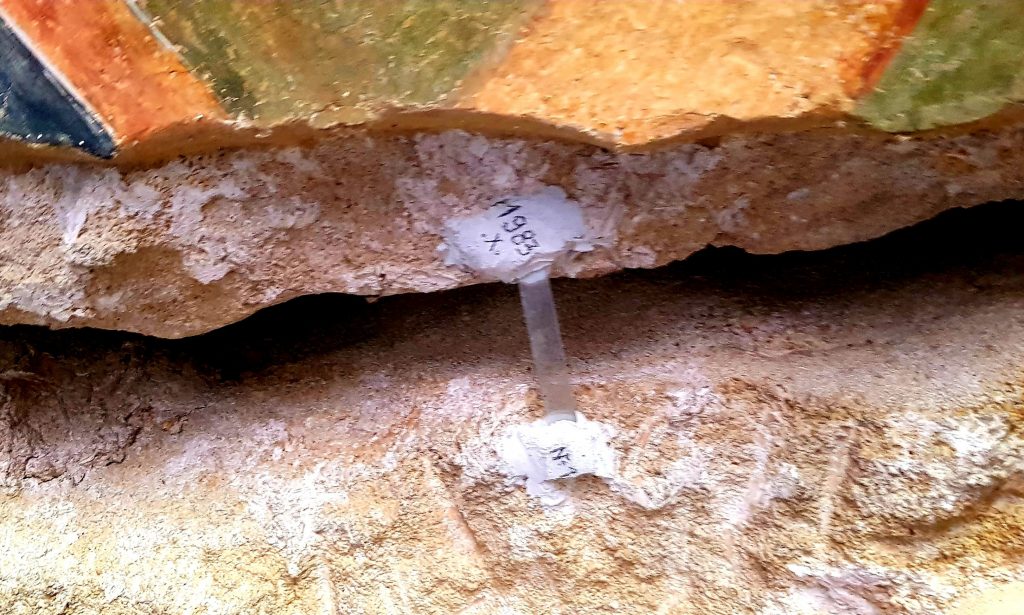
Oh! Silly me! False alarm! The glass is still intact! Still what a good opportunity for a photo of the whole place!
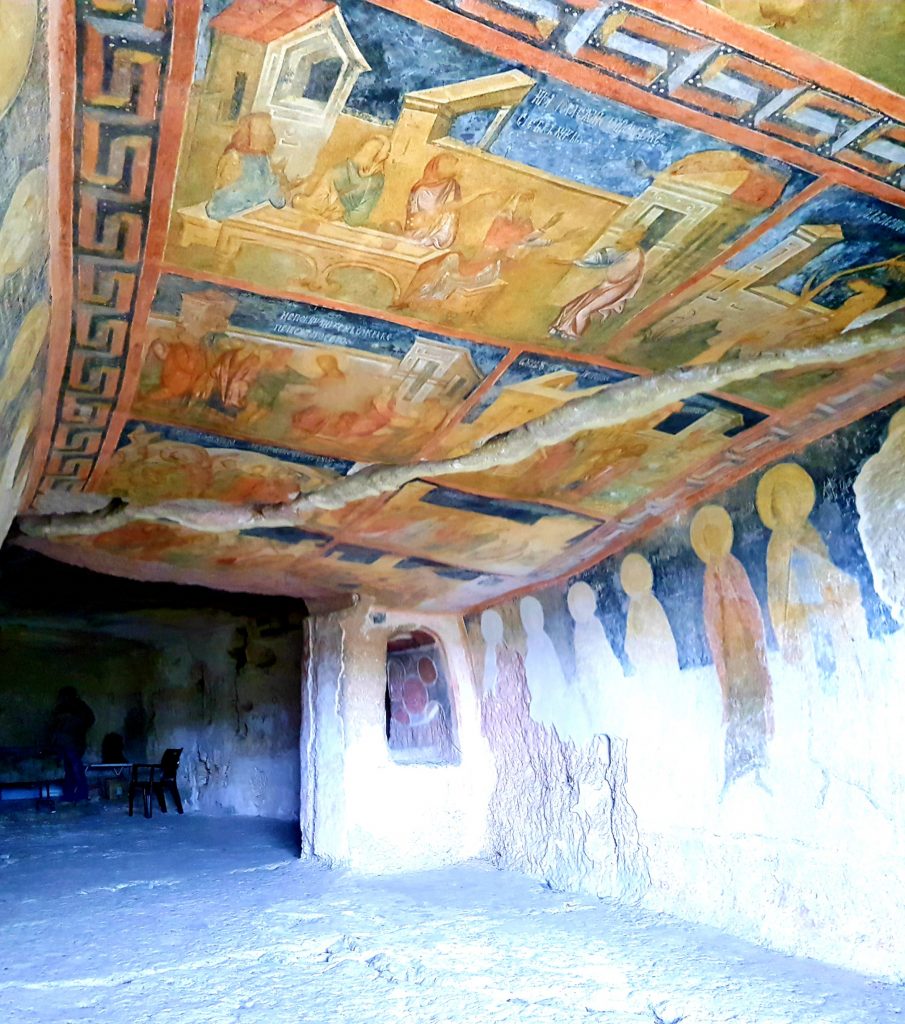
We had to use the steps to get down because George had forgotten the ropes and pitons.
Next stop was the town of Arbanasi. Following the religious theme of the day our first stop.in town was at the Church of the Nativity of Christ. A deceptively unassuming building on the outside …
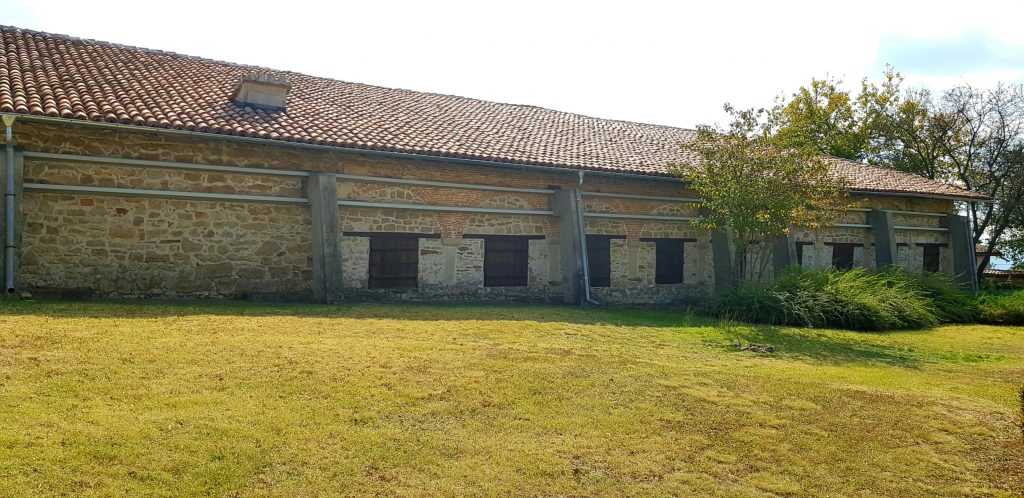
But absolutely beautiful inside …
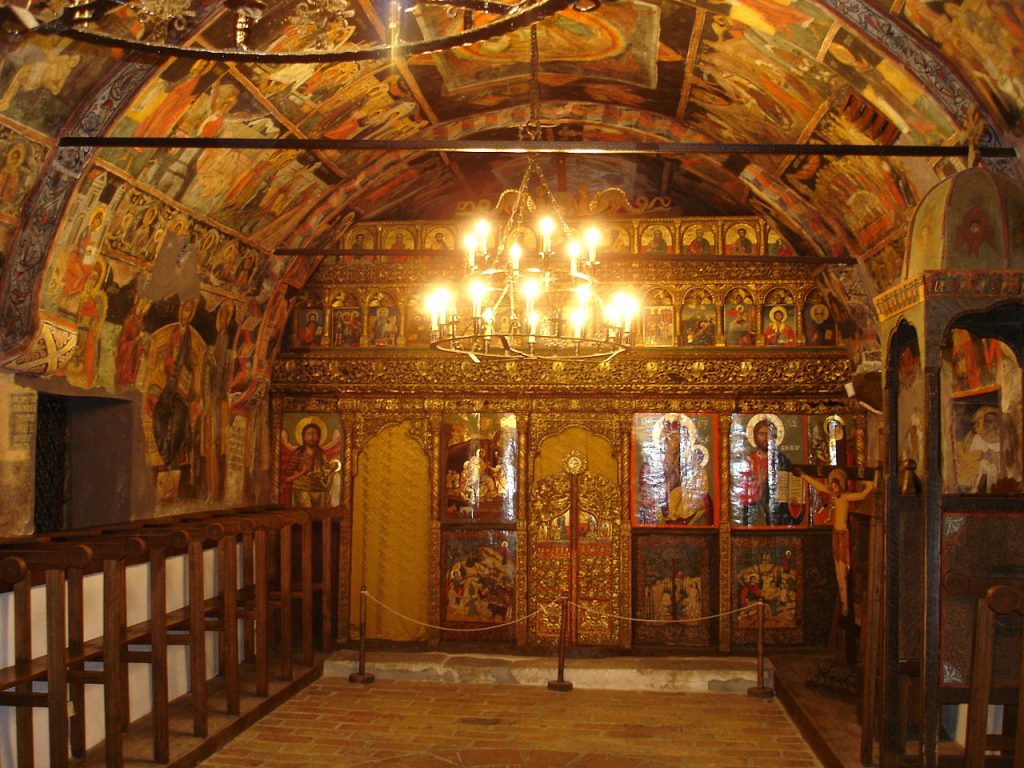
(Photo of the interior by Svilen Enev – I hope he had permission because photos are not allowed inside!).
Here we had a really good explanation about the interior of Eastern Orthodox churches.
The nave is the main body of the church where most of the worshippers stand, and the sanctuary is the area around the altar, east of the nave. The sanctuary is usually one to three steps higher than the nave. The Iconostasis (referred to in an earlier post as the iconostage – sorry!) does not sit directly on the edge of the sanctuary, but is usually set a few feet back from the edge of the top step. This forms a walkway on which the deacon can stand to give litanies during the services.
The iconostasis, though often tall, rarely touches the ceiling. Acoustically, this permits the ekphoneses (liturgical exclamations) of the clergy to be heard clearly by the faithful. Each of the painted icons has got a defined position on the screen.
The iconostasis typically has three openings or sets of doors: the Beautiful Gates or Holy Doors in the centre (largely unused), and the North and South Doors to either side. The central doors remain shut whenever a service is not being held (and often when it is!).
The North and South Doors are often called the Deacons’ Doors. Logical because the deacons use them! The South Door is typically the “entrance” door, and Michael is depicted there because he is the “Defender”; the North Door is the “exit”, and Gabriel is depicted here because he is the “Messenger” of God. These doors may also be casually referred to as the “side doors”.
The photo clearly shows the lack of seating in the body of the church. There are little fold-down flaps for the elderly (we all used them for our 10 minute presentations). Most of the congregation stand for the duration. This can be three hours! And virtually all the action takes place out of sight behind the iconothingy.
The old houses in town are largely two storey. The ground floor and perimeter wall are constructed of stone. The upper level of wood. A sort of defensive arrangement.
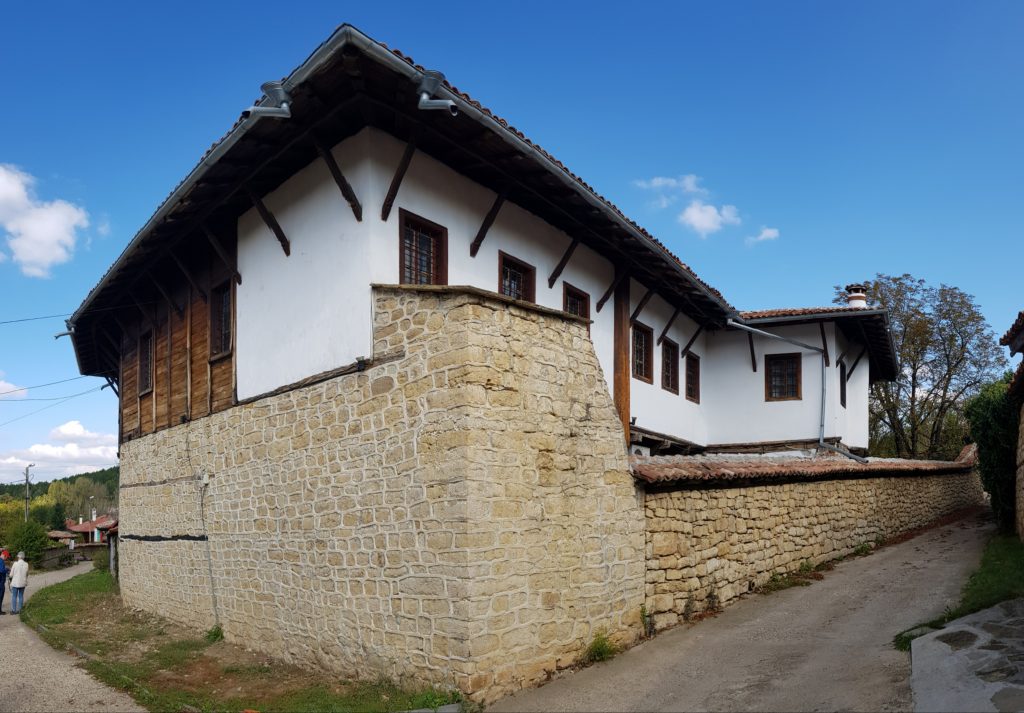
Sometimes the wooden section lets the place down…

Before we left the area we took our packed lunches to Veliko Tarnovo (or should that be Turnovo? Not sure!). This town, often referred as the “City of the Tsars”, has a serious bit of fortification going on on the hillside.
The city is located on the Yarna River and is famously known as the historical capital of the Second Bulgarian Kingdom. The old part of the town is situated on three hills, Tsarevets, Trapezitsa, and Sveta Gora, rising amidst the meanders of the Yantra. On Tsarevets are the palaces of the Bulgarian emperors and the Patriarchate, the Patriarchal Cathedral, and also a number of administrative and residential edifices surrounded by thick walls.
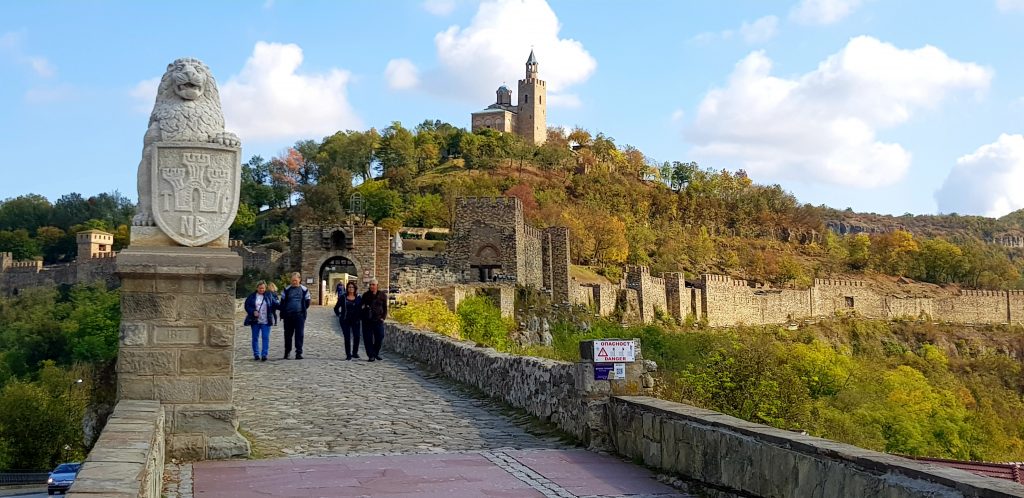
Our coach dropped us in Velchova Zavera Square. Velchova Conspiracy Square! There’s another complicated story here! The square is associated with the unsuccessful attempt of the Bulgarians to revolt in 1835 in Turnovo. Because the plot was betrayed, most of the conspirators (including Velcho Atanasov, the main man) were arrested and executed. OK. So perhaps not so complicated. One hundred years later a monument was erected to the “Heros”.
Well, this was a city with tourists (apart from just us). At least at the fortress end of town. We wandered up the main pedestrian (mostly!) street with the artisan stores selling all the things tourists want buy. We even had our picnic here before piling back on the bus to head for the ship.

More stories to come!
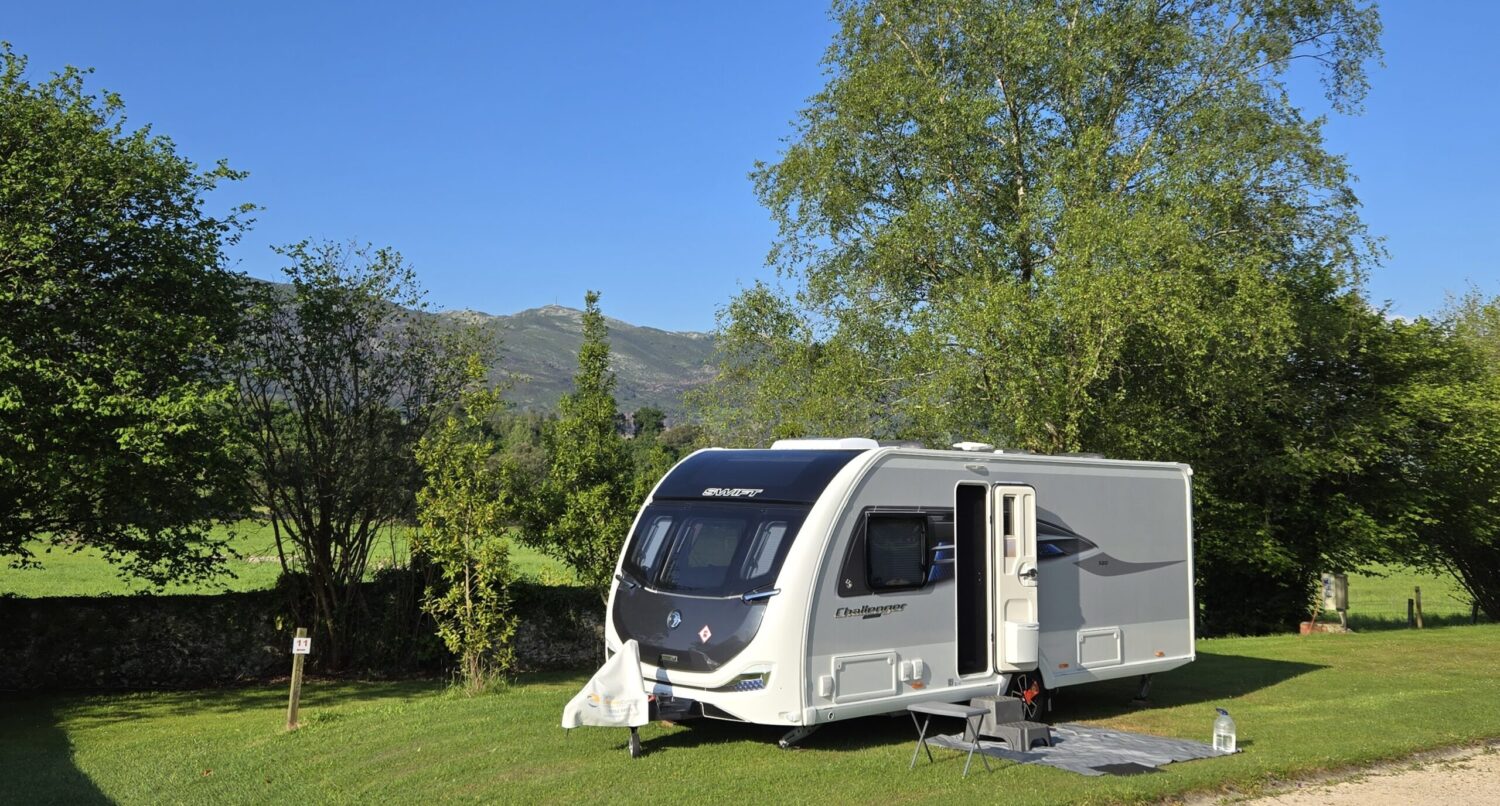
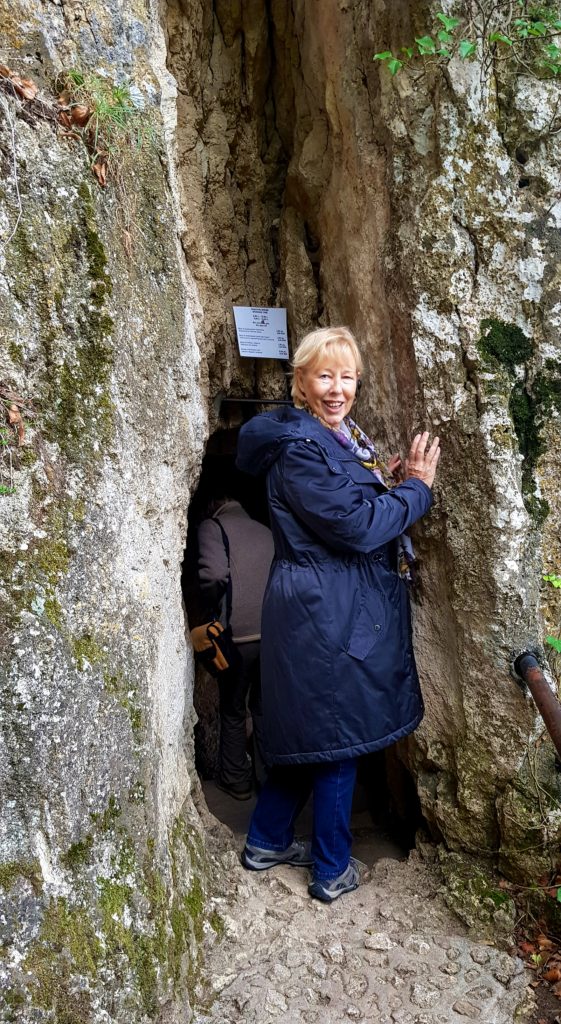
Good humour John….have you found your happy place here with the sun shining? Big hugs and seven kisses
Xxxxxxx
And one from Gary. X
I’m trying. Glenda says very!!!